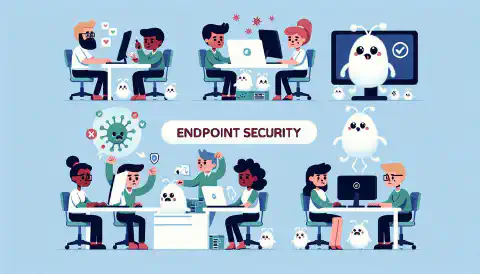Fortify Your E-commerce: The 2024 Security Checklist Revealed
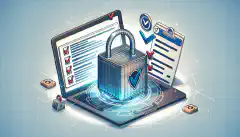
Table of Contents
The 2024 Checklist for Securing Your E-commerce Site
In today’s digital age, securing your e-commerce site is more important than ever. With the increasing threat landscape and the potential consequences of inadequate security measures, it is crucial for businesses to prioritize the protection of customer data and build trust. This article provides a comprehensive checklist for securing your e-commerce site in 2024.
Key Takeaways
- Implement Secure Socket Layer (SSL) encryption to protect sensitive data.
- Enforce strong password policies to prevent unauthorized access.
- Regularly update and patch software to address vulnerabilities.
- Implement two-factor authentication for an extra layer of security.
- Secure payment processing systems to safeguard financial transactions.
Understanding the Importance of E-commerce Security
The Growing Threat Landscape for E-commerce Sites
As a cybersecurity expert, it is crucial to understand the evolving threat landscape that e-commerce sites face. Cybercriminals are constantly finding new ways to exploit vulnerabilities and gain unauthorized access to sensitive customer data. This poses significant risks to both the reputation and financial well-being of e-commerce businesses. To effectively protect against these threats, it is essential to stay informed about the latest attack techniques and security best practices.
- E-commerce sites are prime targets for data breaches due to the valuable customer information they store, such as credit card details and personal identification data.
- Phishing attacks are a common method used by cybercriminals to trick unsuspecting users into revealing their login credentials or financial information.
- Malware and ransomware attacks can infect e-commerce sites and disrupt operations, leading to financial losses and reputational damage.
- Distributed Denial of Service (DDoS) attacks can overwhelm e-commerce sites with a flood of traffic, causing them to become inaccessible to legitimate users.
To illustrate the severity of these threats, consider the following statistics:
| Threat | Percentage of E-commerce Sites Affected |
|---|---|
| Data breaches | 60% |
| Phishing attacks | 45% |
| Malware and ransomware attacks | 35% |
| DDoS attacks | 25% |
These numbers highlight the prevalence of these threats and the urgent need for robust security measures. By understanding the specific risks faced by e-commerce sites, businesses can proactively implement effective security measures to safeguard their customers’ data and maintain their reputation.
The Consequences of Inadequate Security Measures
Inadequate security measures can have severe consequences for e-commerce sites. As a cybersecurity expert, it is crucial to understand the potential risks and repercussions that can arise from a lack of proper security protocols. Here are some key points to consider:
- Data breaches: Insufficient security measures can lead to data breaches, where sensitive customer information such as credit card details, addresses, and personal data can be compromised.
- Financial losses: Inadequate security can result in financial losses for both the e-commerce site and its customers. This can include fraudulent transactions, unauthorized access to payment systems, and legal liabilities.
- Damage to reputation: A security breach can severely damage the reputation of an e-commerce site. Customers may lose trust in the site’s ability to protect their information, leading to a loss of business and potential negative publicity.
- Legal consequences: In some cases, inadequate security measures can result in legal consequences. E-commerce sites may be subject to fines and legal action if they fail to comply with data protection regulations.
To mitigate these risks, it is essential for e-commerce sites to prioritize security and implement robust security measures. This includes regularly updating and patching software, enforcing strong password policies, and implementing secure payment processing systems. Additionally, conducting regular security audits, training employees on data security, and complying with data protection regulations are crucial steps in protecting customer data and maintaining trust.
The Role of Security in Building Customer Trust
As a cybersecurity expert, it is crucial to understand the role of security in building customer trust. Security is a fundamental aspect of any e-commerce site, as it directly impacts the confidence customers have in making online purchases. By implementing robust security measures, e-commerce businesses can establish a strong foundation of trust with their customers.
To build customer trust, e-commerce sites should:
Protect customer data: Safeguarding sensitive customer information, such as personal details and payment data, is paramount. Implementing data encryption and regularly auditing data access can help prevent unauthorized access and data breaches.
Ensure secure transactions: Implementing secure payment processing systems and enforcing strong password policies can help protect customer transactions from fraudulent activities.
Comply with data protection regulations: E-commerce businesses must adhere to data protection regulations, such as the General Data Protection Regulation (GDPR) or the California Consumer Privacy Act (CCPA), to ensure the privacy and security of customer data.
By prioritizing security and taking proactive measures to protect customer data, e-commerce sites can foster trust and loyalty among their customer base.
Essential Security Measures for E-commerce Sites
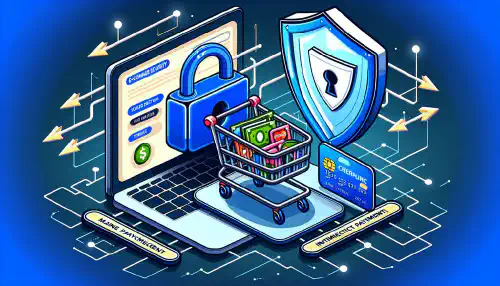
Implementing Secure Socket Layer (SSL) Encryption
Secure Socket Layer (SSL) encryption is a crucial security measure for e-commerce sites. It ensures that data transmitted between the user’s browser and the website is encrypted and cannot be intercepted by malicious actors. By implementing SSL encryption, e-commerce sites can protect sensitive customer information, such as credit card details and personal data, from unauthorized access.
Implementing SSL encryption involves obtaining an SSL certificate from a trusted certificate authority and configuring the website to use HTTPS instead of HTTP. This change in protocol adds an extra layer of security, as the data is encrypted using cryptographic algorithms.
Benefits of implementing SSL encryption:
- Data confidentiality: SSL encryption ensures that sensitive data remains confidential during transmission.
- Data integrity: SSL encryption verifies the integrity of the data, ensuring that it has not been tampered with.
- Authentication: SSL certificates provide authentication, assuring users that they are connecting to the legitimate website.
It is important to regularly monitor and update SSL certificates to maintain the security of the e-commerce site. Failure to do so can result in vulnerabilities that can be exploited by attackers. Additionally, educating users about the importance of looking for the padlock icon and HTTPS in the website URL can help build trust and confidence in the security of the e-commerce site.
Enforcing Strong Password Policies
Enforcing strong password policies is crucial for ensuring the security of your e-commerce site. Weak passwords are one of the most common vulnerabilities that cybercriminals exploit to gain unauthorized access to sensitive information. By implementing SSL certificates and enforcing strong password policies, you can significantly reduce the risk of unauthorized access and protect your customers’ data.
To enforce strong password policies, consider the following:
- Require a minimum password length of at least 8 characters
- Include a combination of uppercase and lowercase letters, numbers, and special characters
- Discourage the use of common passwords and dictionary words
- Implement a password expiration policy to ensure regular password updates
- Educate your users about the importance of strong passwords and provide guidelines for creating secure passwords.
By implementing these measures, you can enhance the security of your e-commerce site and mitigate the risk of password-related attacks.
Regularly Updating and Patching Software
Regularly updating and patching software is essential for maintaining the security of your e-commerce site . By keeping your software up to date, you can mitigate the risk of vulnerabilities that can be exploited by cybercriminals. Here are some key points to consider:
Implementing Two-Factor Authentication
Two-factor authentication (2FA) is a crucial security measure for e-commerce sites. It adds an extra layer of protection by requiring users to provide two forms of identification before accessing their accounts. By implementing 2FA, e-commerce businesses can significantly reduce the risk of unauthorized access and protect sensitive customer information.
Securing Payment Processing Systems
Securing payment processing systems is crucial for protecting sensitive financial information and preventing unauthorized access. By implementing the following security measures, e-commerce sites can ensure the integrity and confidentiality of payment transactions:
- Implementing Secure Socket Layer (SSL) Encryption: Encrypting data transmitted between the customer’s browser and the payment gateway adds an extra layer of security, making it difficult for attackers to intercept and decipher sensitive information.
- Enforcing Strong Password Policies: Requiring complex passwords and regular password updates helps prevent unauthorized access to payment processing systems.
- Regularly Updating and Patching Software: Keeping payment processing software up to date with the latest security patches helps address vulnerabilities and protect against known exploits.
- Implementing Two-Factor Authentication: Adding an extra layer of authentication, such as a one-time password or biometric verification, adds an additional barrier against unauthorized access.
- Securing Payment Processing Systems: Isolating payment processing systems from the rest of the network and implementing strict access controls helps minimize the risk of unauthorized access and potential breaches.
It is important for e-commerce sites to regularly assess the security of their payment processing systems and stay informed about emerging threats and best practices. By following these security measures, e-commerce sites can enhance the trust and confidence of their customers in the security of their financial transactions.
Best Practices for Securing Customer Data
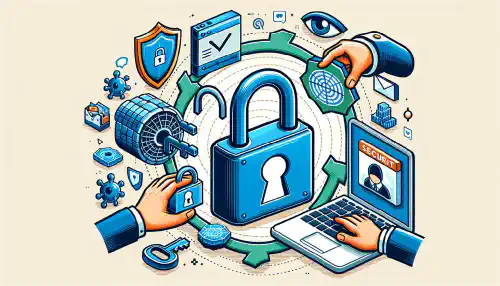
Collecting and Storing Data Responsibly
When it comes to collecting and storing data, responsible practices are crucial for maintaining the security and integrity of your e-commerce site. Data privacy and compliance with regulations should be at the forefront of your data management strategy. Here are some key considerations:
Implementing Data Encryption
Data encryption is a critical security measure for e-commerce sites. By encrypting sensitive data, such as customer information and payment details, businesses can protect this information from unauthorized access. Encryption involves converting data into a format that can only be read with the correct decryption key, making it virtually impossible for attackers to decipher the information.
Implementing data encryption involves the following steps:
- Identify the types of data that need to be encrypted, such as customer names, addresses, and credit card numbers.
- Select a strong encryption algorithm, such as AES (Advanced Encryption Standard), that provides robust security.
- Generate encryption keys that are long and complex to enhance the strength of the encryption.
- Securely store the encryption keys to prevent unauthorized access.
- Integrate encryption into the data storage and retrieval processes to ensure that all sensitive data is encrypted at rest and in transit.
By implementing data encryption, e-commerce sites can significantly reduce the risk of data breaches and protect customer information from falling into the wrong hands.
Regularly Auditing and Monitoring Data Access
Regularly auditing and monitoring data access is crucial for maintaining the security and integrity of customer data. By conducting regular audits, organizations can identify any unauthorized access or suspicious activities that may compromise the confidentiality of sensitive information. Monitoring data access allows for real-time detection of potential security breaches, enabling prompt response and mitigation measures. It also helps in identifying any vulnerabilities or weaknesses in the system that could be exploited by malicious actors. Additionally, regular monitoring ensures compliance with data protection regulations and industry best practices.
Training Employees on Data Security
Training employees on data security is crucial for maintaining the security of an e-commerce site. By providing comprehensive training, organizations can ensure that their employees understand the importance of data security and are equipped with the knowledge and skills to protect sensitive information. Here are some key points to consider when training employees on data security:
- Importance of data security: Emphasize the significance of data security in protecting customer information, preventing data breaches, and maintaining the reputation of the e-commerce site.
- Types of data: Educate employees about the different types of data that need to be protected, such as personal identifiable information (PII), payment card information, and customer order history.
- Data handling best practices: Train employees on best practices for handling and storing data securely, including password management, encryption, and secure file transfer protocols.
- Recognizing phishing attempts: Teach employees how to identify and avoid phishing attempts, which are common methods used by cybercriminals to gain unauthorized access to sensitive data.
- Reporting incidents: Establish clear procedures for reporting security incidents or suspicious activities to the appropriate personnel.
By investing in employee training and creating a culture of data security awareness, organizations can significantly reduce the risk of data breaches and ensure the protection of customer information.
Complying with Data Protection Regulations
Complying with data protection regulations is crucial for e-commerce sites to ensure the security and privacy of customer data. Failure to comply with these regulations can result in severe legal and financial consequences. As a cybersecurity expert, it is important to understand and implement the best practices for data protection. Here are some key considerations:
Protecting Against Common E-commerce Threats

Preventing DDoS Attacks
Distributed Denial of Service (DDoS) attacks pose a significant threat to e-commerce sites. These attacks overwhelm the target server with a flood of traffic, rendering the site inaccessible to legitimate users. To effectively prevent DDoS attacks, e-commerce site owners should consider the following measures:
- Implementing a DDoS mitigation solution: Deploying a dedicated DDoS mitigation solution can help detect and mitigate attacks in real-time, ensuring uninterrupted access to the site.
- Utilizing traffic filtering techniques: Implementing traffic filtering techniques, such as rate limiting and IP blocking, can help identify and block malicious traffic, reducing the impact of DDoS attacks.
- Leveraging content delivery networks (CDNs): CDNs distribute website content across multiple servers, reducing the load on any single server and providing additional protection against DDoS attacks.
Tip: Regularly testing the effectiveness of DDoS prevention measures is crucial to ensure their ongoing efficacy and adaptability to evolving attack techniques.
Detecting and Preventing Fraudulent Activities
Fraudulent activities pose a significant threat to e-commerce sites, compromising the integrity of transactions and undermining customer trust. It is crucial for businesses to implement robust measures to detect and prevent fraudulent activities. By leveraging advanced technologies and adopting best practices , organizations can effectively mitigate the risks associated with fraud.
Securing Against Malware and Ransomware
Malware and ransomware pose significant threats to e-commerce sites, as they can lead to data breaches, financial losses, and damage to a company’s reputation. It is crucial for businesses to implement robust security measures to protect against these threats.
Here are some key strategies to secure your e-commerce site against malware and ransomware:
- Implement a multi-layered security approach: Utilize a combination of antivirus software, firewalls, and intrusion detection systems to detect and prevent malware and ransomware attacks.
- Regularly update and patch software: Keep all software, including operating systems, web servers, and content management systems, up to date with the latest security patches to address vulnerabilities that can be exploited by malware and ransomware.
- Educate employees on safe browsing and email practices: Train your staff on how to identify and avoid suspicious websites, links, and email attachments that may contain malware or ransomware.
- Backup your data regularly: Implement a regular backup strategy to ensure that your data is protected in the event of a malware or ransomware attack.
Tip: Store backups offline or in a separate, secure location to prevent them from being compromised by malware or ransomware.
By following these strategies, e-commerce businesses can significantly reduce the risk of malware and ransomware attacks and protect their valuable data and assets.
Protecting Against Phishing and Social Engineering
Phishing and social engineering attacks are common tactics used by cybercriminals to gain unauthorized access to sensitive information. These attacks often involve tricking individuals into revealing their personal or financial information through deceptive emails, messages, or phone calls. To protect your e-commerce site and your customers from these threats, it is essential to implement the following security measures:
- Employee Training: Educate your employees about the risks of phishing and social engineering attacks. Teach them how to identify suspicious emails, messages, or phone calls and how to respond appropriately.
- Email Filtering: Implement robust email filtering systems to detect and block phishing emails. These systems can identify common phishing techniques and prevent malicious emails from reaching your employees and customers.
- Multi-Factor Authentication: Require users to go through an additional layer of authentication, such as a one-time password or biometric verification, to access sensitive information or perform critical actions.
- User Awareness: Regularly communicate with your customers about the risks of phishing and social engineering attacks. Provide them with tips on how to identify and avoid falling victim to these scams.
- Monitoring and Incident Response: Implement monitoring systems to detect any suspicious activities or attempts at phishing. Have a well-defined incident response plan in place to quickly respond to and mitigate any potential breaches or attacks.
By implementing these security measures, you can significantly reduce the risk of falling victim to phishing and social engineering attacks and protect your e-commerce site and your customers’ sensitive information.
Monitoring and Responding to Security Incidents
As a cybersecurity expert, monitoring and responding to security incidents is a critical aspect of ensuring the safety and integrity of your e-commerce site. Timely detection and swift response to security incidents can help minimize the impact and prevent further damage. Here are some key considerations for effectively monitoring and responding to security incidents:
- Implementing real-time monitoring tools that can detect and alert you to any suspicious activities or anomalies in your system.
- Establishing incident response procedures that outline the steps to be taken in the event of a security incident, including who should be notified and how the incident should be escalated.
- Regularly reviewing and analyzing logs and audit trails to identify any signs of unauthorized access or suspicious behavior.
- Conducting regular vulnerability assessments and penetration testing to proactively identify and address any potential security weaknesses.
- Maintaining a well-trained incident response team that is equipped with the necessary skills and knowledge to handle security incidents effectively.
Remember, a proactive and well-prepared approach to monitoring and responding to security incidents is crucial in safeguarding your e-commerce site and maintaining the trust of your customers.
Building a Robust Incident Response Plan
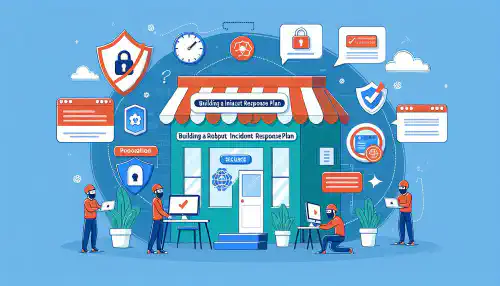
Creating an Incident Response Team
Creating an incident response team is a crucial step in ensuring the security and resilience of your e-commerce site. This team should be composed of individuals with expertise in cybersecurity and incident response, who can effectively handle and mitigate security incidents. The incident response team plays a vital role in identifying and responding to security breaches, minimizing the impact on your business and customers. They should be well-trained and equipped with the necessary tools and resources to effectively handle incidents and restore normal operations.
Developing an Incident Response Plan
Developing an effective incident response plan is crucial for mitigating the impact of security incidents and minimizing potential damage to your e-commerce site. This plan should outline the necessary steps and procedures to be followed in the event of a security breach or incident. Here are some key considerations when developing an incident response plan:
- Identify and assess potential risks: Conduct a thorough risk assessment to identify potential vulnerabilities and threats to your e-commerce site. This will help you prioritize your security measures and allocate resources effectively.
- Define roles and responsibilities: Clearly define the roles and responsibilities of individuals involved in the incident response process. This includes designating a dedicated incident response team and ensuring that each team member understands their specific responsibilities.
- Establish communication channels: Establish clear communication channels for reporting and responding to security incidents. This includes defining the appropriate escalation paths and ensuring that all relevant stakeholders are informed in a timely manner.
- Create an incident response playbook: Develop a comprehensive incident response playbook that outlines the step-by-step procedures to be followed during a security incident. This playbook should include guidelines for incident detection, containment, eradication, and recovery.
- Regularly test and update the plan: Regularly test and evaluate the effectiveness of your incident response plan through simulated exercises and tabletop drills. This will help identify any gaps or weaknesses in the plan and allow for necessary updates and improvements.
By following these best practices and developing a robust incident response plan, you can effectively respond to security incidents and minimize the impact on your e-commerce site.
Testing and Evaluating the Plan Regularly
Regular testing and evaluation of the incident response plan is crucial for maintaining the effectiveness of the security measures. This process allows organizations to identify any weaknesses or gaps in the plan and make necessary improvements. By conducting regular tests, organizations can ensure that their incident response team is well-prepared and capable of effectively responding to security incidents. It also provides an opportunity to validate the plan’s effectiveness and identify areas for enhancement. Testing and evaluating the plan regularly helps organizations stay proactive in their approach to cybersecurity and ensures that they are able to respond swiftly and effectively to any potential threats or breaches.
Documenting and Learning from Security Incidents
Documenting and learning from security incidents is a crucial aspect of maintaining a secure e-commerce site. By thoroughly documenting incidents, organizations can gain valuable insights into the vulnerabilities and weaknesses in their security measures. This information can then be used to improve and strengthen their overall security posture . Learning from security incidents also allows organizations to identify patterns and trends, enabling them to proactively address potential threats and prevent future incidents. It is important for organizations to establish a formal process for documenting and learning from security incidents, ensuring that all relevant information is captured and analyzed.
Continuous Improvement of Incident Response Capabilities
As a cybersecurity expert, continuous improvement of incident response capabilities is crucial for effectively mitigating and responding to security incidents. This involves ongoing evaluation and enhancement of the incident response team’s skills, processes, and tools. Here are some key strategies for achieving continuous improvement:
Regular Training and Education: Provide regular training sessions and educational resources to keep the incident response team updated on the latest threats, attack techniques, and best practices in incident response.
Simulation Exercises: Conduct simulated incident response exercises to test the team’s readiness and identify areas for improvement. These exercises can simulate various types of security incidents and help the team practice their response strategies.
Post-Incident Analysis: After each security incident, perform a thorough analysis to identify any gaps or weaknesses in the incident response process. Use the findings to refine and improve the team’s response capabilities.
Collaboration and Knowledge Sharing: Encourage collaboration and knowledge sharing among the incident response team and other cybersecurity professionals. This can be done through regular meetings, workshops, and online forums.
Technology Evaluation: Continuously evaluate and update the incident response tools and technologies used by the team. Stay informed about the latest advancements in incident response technology and adopt new tools that can enhance the team’s capabilities.
By implementing these strategies, organizations can ensure that their incident response capabilities are continuously improving, enabling them to effectively detect, contain, and mitigate security incidents.
Building a robust incident response plan is crucial for organizations to effectively handle and mitigate cyber threats. At simeononsecurity, we understand the importance of staying ahead in cybersecurity. Our website is dedicated to providing the latest trends and best practices on privacy, security, and technology . With expert security insights and resources, we aim to be an essential resource for all. Visit simeononsecurity.com to discover expert security and insights and stay updated with the ever-evolving world of cybersecurity.
Conclusion
In conclusion, securing your e-commerce site is of utmost importance in today’s digital landscape. The growing threat landscape for e-commerce sites highlights the need for robust security measures to protect against potential attacks. Inadequate security measures can have severe consequences, including financial loss, damage to reputation, and loss of customer trust. Implementing essential security measures such as SSL encryption, strong password policies, regular software updates, and two-factor authentication is crucial in safeguarding your site and customer data. Additionally, protecting customer data through responsible data collection and storage, data encryption, regular auditing, and employee training is essential for maintaining customer trust and complying with data protection regulations. To further enhance security, it is important to be proactive in protecting against common e-commerce threats such as DDoS attacks, fraud, malware, phishing, and social engineering. Building a robust incident response plan, including creating a dedicated incident response team, developing a comprehensive plan, regularly testing and evaluating the plan, and documenting and learning from security incidents, is vital for effectively responding to and mitigating security breaches. By following these best practices and continuously improving incident response capabilities, e-commerce site owners can ensure the security and integrity of their platforms, instilling confidence in customers and establishing a strong foundation for success in the digital marketplace.
Frequently Asked Questions
What is the importance of e-commerce security?
E-commerce security is important to protect sensitive customer data, prevent financial loss, and build trust with customers.
What are some common security threats to e-commerce sites?
Common security threats to e-commerce sites include DDoS attacks, fraud, malware, phishing, and social engineering.
How can I secure my e-commerce site against DDoS attacks?
To secure your e-commerce site against DDoS attacks, you can use traffic filtering, load balancing, and content delivery networks (CDNs).
What measures can I take to prevent fraudulent activities on my e-commerce site?
To prevent fraudulent activities on your e-commerce site, you can implement fraud detection systems, use CAPTCHAs, and monitor transactions for suspicious behavior.
What is the importance of data encryption in e-commerce?
Data encryption is important in e-commerce to protect customer data from unauthorized access and ensure confidentiality.
How can I comply with data protection regulations for my e-commerce site?
To comply with data protection regulations for your e-commerce site, you can implement privacy policies, obtain consent for data collection, and provide options for data deletion.





